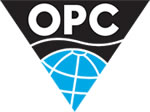Central & SE Asia / Australasia
Country profile: Pakistan
| Location: | Southern Asia, bordering the Arabian Sea, between India on the east and Iran and Afghanistan on the west and China in the north |
| Climate: | mostly hot, dry desert; temperate in northwest; arctic in north |
| Terrain: | flat Indus plain in east; mountains in north and northwest; Balochistan plateau in west |
| Size: | 803940 sq. km total (Land area: 778720 sq. km Water area: 25220 sq.km) |
| Population: | 167,762,040 (July 2008 est.) |
| Languages: | Punjabi 48%, Sindhi 12%, Siraiki (a Punjabi variant) 10%, Pashtu 8%, Urdu (official) 8%, Balochi 3%, Hindko 2%, Brahui 1%, English (official; lingua franca of Pakistani elite and most government ministries), Burushaski and other 8% |
| Government: | federal republic |
| Capital city: | Islamabad |
| Legal system: | based on English common law with provisions to accommodate Pakistan's status as an Islamic state; accepts compulsory ICJ jurisdiction with reservations |
| Currency: | Pakistani rupee (PKR) |
| Licensing: |
Country profile
Pakistan's economy has recovered from years of sluggishness, caused primarily to droughts, with growth experienced in the agriculture, industry and service sectors. In fiscal year (FY) 2004/2005 (ending in June), Pakistan achieved gross domestic product (GDP) growth of 8.4 percent and in 2005/2006 the country had GDP growth of 6.6 percent. High inflation (9.1 percent) in 2004/2005 was attributed to escalating oil prices, higher housing rents and food item shortages. In an effort to decrease inflation, the central bank of Pakistan announced that it would raise interest rates. The strategy worked, with inflation decreasing to 7.6 percent by the end of FY 2005/2006. The International Monetary Fund (IMF), and the World Bank, both major donor organizations to Pakistan, have acknowledged the favorable performance and progress in Pakistan’s structural reforms, but have stressed even greater reform in the public institutions and the public energy sector where progress has been slow. In 2004, the IMF approved a fresh loan of nearly $250 million as part of its overall $1.5 billion aid package to Pakistan. In 2005, the United States began the first installments of a $3 billion aid package, which will continue through 2010. In 2006, the World Bank approved loans of $185 million for various reform and infrastructure projects, in addition to the nearly $850 million loaned to the country in 2005.
The devastating earthquake that stuck Pakistan in October 2005 destroyed lives and caused considerable damage to the country’s infrastructure. However, the majority of the damage occurred in rural areas of the country and had minimal impact on the economy. Furthermore, international aid inflows in the aftermath of the earthquake have served to bolster Pakistan’s economy. The United States pledged $510 million for rebuilding Pakistani infrastructure, but relief coordinators estimate that Pakistan will need billions of dollars and up to ten years to fully rebuild. Pakistan and India decided to extend aid to one another after the earthquake. They also agreed to continue confidence building measures, which include the notification of missile testing, creating new bank branches and increasing the number of airline destinations in both countries.
Energy Overview
In recent years, the combination of rising oil consumption and flat oil production in Pakistan has led to rising oil imports from Middle East exporters. In addition, the lack of refining capacity leaves Pakistan heavily dependent on petroleum product imports. Natural gas accounts for the largest share of Pakistan’s energy use, amounting to about 50 percent of total energy consumption. Pakistan currently consumes all of its domestic natural gas production, but without higher production Pakistan will need to become a natural gas importer. As a result, Pakistan is exploring several pipeline and LNG import options to meet the expected growth in natural gas demand. Pakistan’s electricity demand is rising rapidly. According to Pakistani government estimates, generating capacity needs to grow by 50 percent by 2010 in order to meet expected demand.
Energy production and consumption
| Oil | Gas | |
| Production: | 68,220 bbl/day (2005 est.) | 29 billion cu m (2005 est.) |
| Consumption: | 345,000 bbl/day (2005 est.) | 29 billion cu m (2005 est.) |
| Exports: | 23,230 bbl/day (2005 est.) | |
| Imports: | 278,900 bbl/day (2005 est.) | |
| Reserves: | 376 million bbl (2007 est.) | 764 billion cu m (1 January 2006 est.) |
| Major fields: |
Pakistan - recent news
| 02 Jan 26 |
Pakistan: OGDCL reports oil and gas discovery at Baragazai X-01 (Slant) well - Datta Formation, Nashpa Block, Khyber Pakhtunkhwa, Pakistan Oil and Gas Development Company Limited (OGDCL), operator of Nashpa Exploration License (65% working interest), has made an oil and gas discovery over Datta Formation at its exploratory well Baragzai X-01 (Slant), located in District Kohat, Khyber Pakhtunkhwa Province, Pakistan. |
| 10 Dec 25 |
Pakistan: OGDCL reports significant oil and gas discovery at the Baragzai X-01 (Slant) well in Nashpa Block, district Kohat, Khyber Pakhtunkhwa Oil and Gas Development Company Limited (OGDCL) has made a significant oil and gas discovery at its exploratory well Baragzai X-01 (Slant) in Nashpa Block, district Kohat, Khyber Pakhtunkhwa. |
| 20 Oct 25 |
Pakistan: MariEnergies has announced an oil discovery at the Shawal-1 well in Pakistan MariEnergies has announced an oil discovery resulting from its exploratory efforts at the Shawal-1 well, drilled in the Mari Development & Production Lease (Mari D&PL), located in Sindh Province. MariEnergies is the Operator of Mari D&PL with 100% working interest. |
| 01 Aug 25 |
Pakistan: OGDCL announces discovery at the Chakar-1 exploration well in the Tay Block, Sindh Province Oil & Gas Development Company Limited (OGDCL), as Operator (95%) of the TAY Exploration License, along with its joint venture partner Government Holdings (Private) Limited (GHPL) with 5% carried interest, has made an oil discovery at the exploratory well Chakar-1, located in District Tando Allah Yar, Sindh Province. |
| 13 Jun 25 |
Pakistan: OGDCL announces oil and gas discovery at Faakir-l exploratory well in Sindh Province Oil & Gas Development Company Limited (OGDCL) has announced a gas/condensate discovery at exploration well Faakir-1, located within Bitrisim Exploration Licence in District Khairpur, Sindh Province. |
Pakistan - more news
Other countries in this region
- Australia,
- Bangladesh,
- Brunei,
- Cambodia,
- China,
- Fiji,
- Hong Kong,
- India,
- Indonesia,
- Japan,
- Laos,
- Malaysia,
- Maldives,
- Mongolia,
- Myanmar,
- Nepal,
- New Zealand,
- North Korea,
- Palau,
- Papua New Guinea,
- Philippines,
- Singapore,
- South Korea,
- Sri Lanka,
- Taiwan,
- Thailand,
- Timor Leste,
- Vietnam











